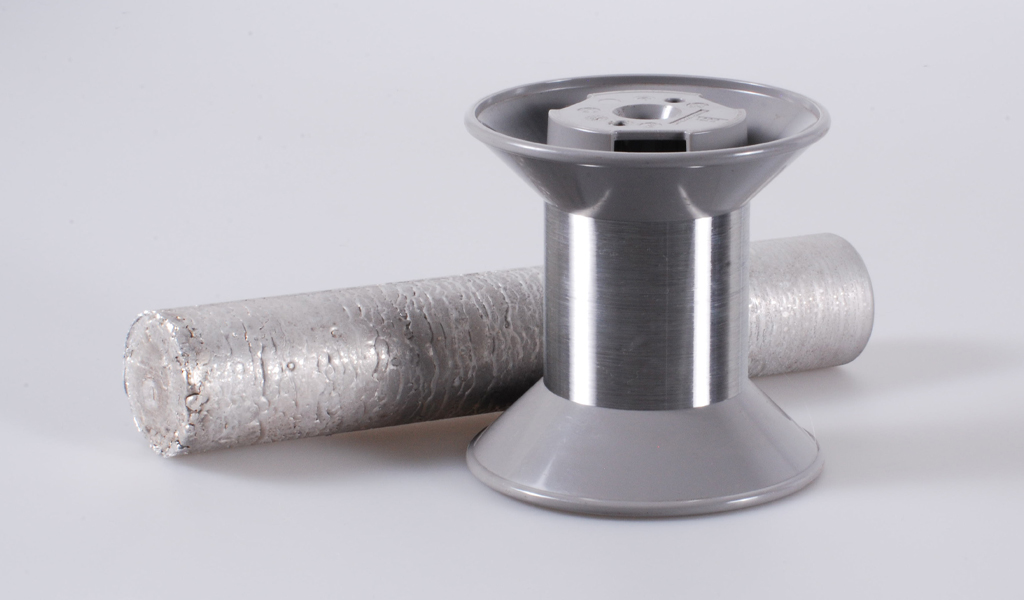The assessment of magnesium wire coatings: Paving the path for absorbable implants

Fort Wayne Metals is dedicated to pushing the boundaries of materials science, delivering precision-engineered solutions for the world’s most demanding applications. With expertise in advanced wire manufacturing, the company supports industries where performance, reliability, and innovation are paramount.
In this technical blog, Adam Griebel and Dr. Jeremy Schaffer, along with other contributors, provide insights into the materials, processes, and engineering advancements that drive better outcomes. This post serves as a high-level summary of our technical white paper, distilling key findings and practical applications.
Advancing biodegradable medical devices with coated magnesium wire
In recent years, the medical field has witnessed significant innovation in developing absorbable materials for permanent implants. These advances promise to revolutionize devices like stents, staples, and sutures by eliminating the need for permanent materials that may cause long-term complications or additional surgeries to remove them. Among these developments, magnesium (Mg) alloys have emerged as a frontrunner due to their biocompatibility and ability to degrade harmlessly within the body.
Challenges of magnesium in medical applications
Despite its appeal, magnesium's relatively rapid degradation rate poses challenges, particularly for fine diameter wires required in certain medical applications. These wires must maintain their mechanical integrity throughout the healing process to provide sufficient support. This dilemma has driven researchers from our Research and Development team to explore coating techniques that slow the degradation rate while preserving the absorbable magnesium wire’s flexibility and strength.
Innovative coatings for magnesium wire
For this study, Fort Wayne Metals’ patented magnesium alloy LZ21 wire, designed for ductility and moderate strength, was processed into wires with a final diameter of 0.3 mm and subjected to three conditions: bare, anodized, and polymer-coated. The polymer layer, made from polycaprolactone (PCL), was applied over the anodized wire to create a dual-layer system.
Key findings from in vitro and in vivo testing
In vitro testing revealed substantial differences in degradation rates between the coated and bare wires. Bare wires lost 82% of their mechanical strength within seven days. In contrast, anodized wires retained 60% of their strength, and PCL-coated wires maintained over 90% of their strength even after 14 days. These results highlight the significant protective benefits of both anodization and polymer coatings.
In vivo testing, conducted via subcutaneous implantation in mice, showed slower degradation rates compared to in vitro conditions. Bare wires retained 84% of their structure after seven days and 60% after 33 days. The PCL-coated wires exhibited almost no signs of degradation at either time point, underscoring their effectiveness as a corrosion barrier.
Implications for medical device development
These findings offer promising implications for the future of absorbable medical devices. The dual-layer coating system delays corrosion, preserving the mechanical properties through the critical tissue healing period. The study also established an in vitro-in vivo correlation (IVIVC) factor of 8.1, which provides a foundation for predicting real-world performance based on accelerated laboratory testing.
Future directions
While these coatings are promising, further research is needed to fine-tune their performance. For instance, modifying the thickness or composition of the polymer layer could optimize the balance between protection and timely degradation. Additionally, studying the effects of plastic deformation during implantation on corrosion rates is needed to ensure real-world applicability.
Conclusion
The use of coated magnesium wire marks a significant step forward in creating safer, more effective absorbable medical devices. By addressing magnesium's rapid degradation, these innovative coatings pave the way for a new generation of implants that support healing while seamlessly integrating into the body's natural processes.
For a comprehensive look at our findings, check out the full whitepaper.
Want to discuss how our materials may support your next innovation? Connect with our team!
Categories: R&D and Engineering Insights, Materials Science, Biodegradable Implants

